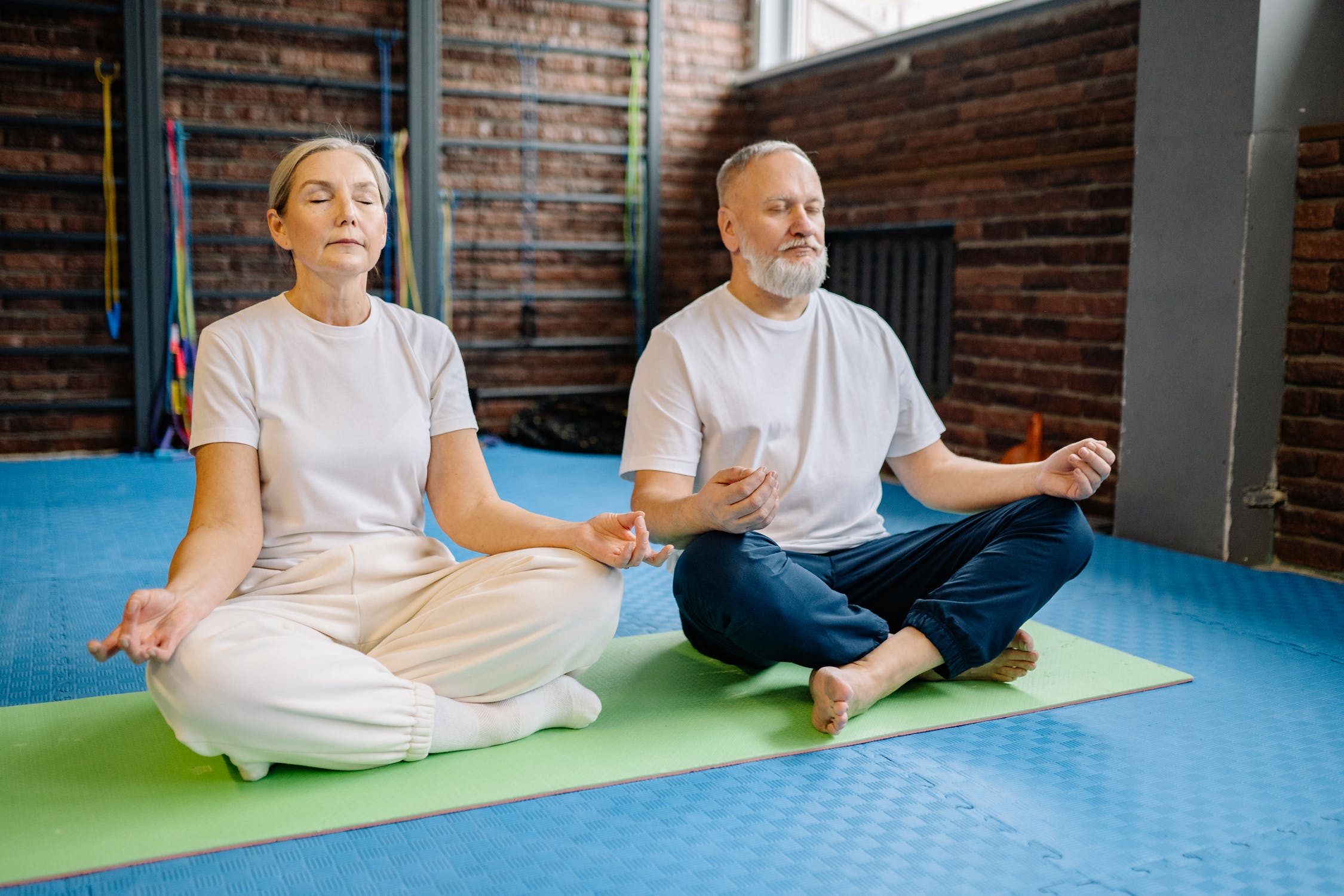Mindfulness… Where to start?! Perhaps you want to bring more mindful moments into your day or you’ve heard all about the benefits of mindfulness but don’t really know where to begin. In this guide, we’re going to walk you through the basic steps to beginning mindfulness so that you can bring this powerful practice into your day.
Practising mindfulness might seem a little bit daunting when you don’t know exactly how to get started, so consider this your beginner’s walkthrough to ensure you can get the most out of this amazing tool.

The Benefits of Mindfulness
Before we dig into beginning mindfulness, let’s first consider some of the benefits – and there are a lot! Practising mindfulness isn’t anything new, in fact, it’s been around for thousands of years. The origins of mindfulness can be traced back to various different religions such as Hinduism and Buddhism, and has been adapted and studied by secular groups in more recent times. Over the years, the number of studied benefits of mindfulness has grown exponentially, and here are just some of them:
- Reducing stress, particular using Mindfulness-Based Stress Reduction (MBSR)
- A decrease in depression symptoms, particular using Mindfulness-Based Cognitive Therapy (MBCT)
- Reducing rumination (repetitive negative thought patterns)
- Improve focus and working memory
- Increased emotional regulation and decreased emotional reactivity, particular when combined with Dialectical Behaviour Therapy (DBT)
- Better relationships with others
- Some mindfulness studies also show benefits to physical health, including reducing some chronic illness symptoms
- Improved overall well-being

The Different Types of Mindfulness
Mindfulness can cover a really broad range of different types and methods, some of which are more common than others. Many people may first discover mindfulness meditation and that’s how they’ll dip their toes into the water. However, others may get their first taste of mindfulness during mindful eating (excuse the pun) and want to learn more about it from there. If you have ever had certain types of therapy, such as DBT, then you may have also been practising mindfulness without realising!
Here are just some of the different types you may come across when beginning mindfulness:
Mindfulness Meditation
As mentioned, this is likely to be one of the most popular entryways into mindfulness for most people. Meditation incorporates many of the principles of mindfulness, although it’s important to note that these two aren’t mutually exclusive! If you think mindfulness is all about meditating in a dark room or at a silent retreat, then don’t panic.
Mindfulness meditation is just one of the many different ways you can be mindful and lots of people who practise mindfulness don’t meditate at all. However, if you do enjoy meditation then this is an excellent way to bring more mindful moments into your day.

Mindful Eating
Something we’re big fans of at The Anti-Burnout Club is mindful eating! Practising mindfulness when eating can have a whole range of benefits, including improving our relationship with food and our bodies overall. Mindful eating is ideal for bringing more mindfulness into your day, as it can be done at the same time as something you already do – eat!
This is another excellent way to get started with mindfulness and here we have a whole mindful eating guide to support our mini-course with nutritionist and intuitive eating counsellor Ela Law.
Mindful Movement
There are plenty of different types of movement and exercise that work hand in hand with mindfulness, so it may be something you’re practising without realising when you move your body! Popular mindful movement types include yoga, Pilates, Tai Chi, and Qigong.
Many of these types of movement encourage you to practise mindfulness as you’re working your way through the different poses or moves. Checking in with how you and your body is feeling at that present moment is ideal for those beginning mindfulness.

Little Mindful Moments
At The Anti-Burnout Club we believe in bringing little mindful moments into your day as often as you can. We don’t always have time to meditate or fit in a yoga class, so we always look for ways of practising mindfulness alongside our usual daily activities.
Bringing your attention to the present when brushing your teeth, washing the dishes or on your morning commute can help turn mindfulness into a habit that then becomes easier to do even in times of stress or anxiety. We have some mindfulness exercises below and our quick mindful moments on the site to help you bring in more little mindful moments too.
MBSR, MBCT, and MSC
Some people may also experience mindfulness through different types of therapy or mindfulness courses and programs. There are three key areas here, Mindfulness-Based Stress Reduction (MBSR), Mindfulness-Based Cognitive Therapy (MBCT) and Mindful Self-Compassion (MSC).
Generally, these are ongoing programs delivered by a therapist to help reduce stress (MBSR), help ease symptoms of depression and/or anxiety (MBCT), or to develop more self-compassion (MSC). If you’ve ever had therapy such as CBT or DBT then you may have already experienced some of these mindfulness techniques.

Mindfulness: Where to Start?
So, now we know the benefits and all the different types of mindfulness, where do we start?! The truth is, you can start wherever you’d like to. Some people want to bring more mindfulness into their days through physical activity and movement (such as yoga) and others prefer little mindful moments they can practise when they’re doing something else (such as washing the dishes). Here’s our step by step guide to beginning mindfulness if you’re unsure:
- Make a note of anything you already do where you are likely already practising mindfulness, such as meditation or yoga.
- Look for key areas in your day where you might feel most stressed or where you start ruminating. What are you doing during these times? Can you fit in little mindful moments around these?
- Consider turning mindfulness into a habit by adding in a daily mindfulness practice, whether that’s just a little mindful moment when brushing your teeth, 10 minutes of meditation in the mornings, or practising mindful eating at dinner time.
- If you’re already working with a therapist on concerns such as depression, anxiety or stress, ask if they have any mindfulness exercises or techniques you can use to practice at home.
- Use the below beginner mindfulness exercises to integrate mindful moments into your daily routine.
- Don’t beat yourself up if it doesn’t come straight away or you find it difficult! In fact, integrative therapist Gemma discusses this in this podcast episode: “Struggling to Get Mindfulness ‘Right’? Here’s What Therapist Gemma Advises.”
- Remember that practising mindfulness is individual to you! Find the ways you like to bring more mindfulness into your day and work with those. As Gemma explains in that podcast, you don’t necessarily have to become a Zen Master to get the most out of mindfulness.
- Consider expanding your knowledge of mindfulness with books, blogs and courses. The better you understand it, the easier it becomes to find what works for you.
- Take part in our online mindfulness classes and courses, including little guided mindful moments that fit into your day.
- Share your experiences with others! Our community is the perfect place to learn and grow with others, and find new mindfulness techniques you can try on for size!

Beginner Mindfulness Exercises
Want some mindfulness exercises to get started with? We have rounded up some of our favourite beginner mindfulness exercises that you can try out right away. Each one should only take a few minutes (although you can practice for longer if you have more time) and will help bring a little mindful moment into your day.
Here are six beginner mindfulness exercises in brief, and we have a free mindfulness activities PDF you can download to go through them in more detail.
54321 (The Five Senses)
The Mindfulness 54321 Technique (also known as The Five Senses Technique) is ideal for beginners and can quickly bring our attention to the present moment to feel more grounded. Focus on each of these aspects one after the other:
Bring your attention to 5 things you can see
Bring your attention to 4 things you can touch
Bring your attention to 3 things you can hear
Bring your attention to 2 things you can smell
Bring your attention to 1 thing you can taste
Body Scan
Our bodies can be an excellent way to connect with the present moment and a body scan allows you to become mindful of where we are physically and mentally. We can also use our bodies to anchor ourselves, which makes this perfect for grounding.
Read the full body scan script and practice this mindfulness technique in our free PDF here.
Childlike Wonder
Imagine if you could see everything as if it’s all brand new once again? This childlike wonder mindfulness exercise helps you do just that! During this little mindful moment, you’ll look around you as if it’s the first time you’re seeing everything.
This mindfulness exercise can really help you to reconnect with the beauty of the world around you and it’s one of our personal favourites! Head to the full technique here.
Emotional Awareness
In this mindful moment, we want to connect with our emotions. This is an extremely powerful way to use mindfulness and finding new ways of relating to the emotions that can so often take over our minds. This mindfulness exercise is great for cultivating more emotional regulation as we open our minds to any emotions present without any judgement.
You can go through this step-by-step mindfulness exercise here.
Past, Future, Present
Mindfulness is all about focusing our attention on the present, but how do you do that when your mind constantly wants to wander to the past or future? This mindfulness exercise will help you gently guide your mind towards the present moment more often.
It’s ideal for reducing rumination or anxiety and we walk you through it right here.
Mindful Seeing in Nature
Finally, experience a guided mindful moment with our mindful seeing in nature exercise. You only need a few minutes for this video/audio and it’s best when out on a walk or somewhere you can see nature. However, if that’s not possible for any reason then you can watch the video that goes with it.
Enjoy this mindful seeing in nature exercise video/audio here.
We know it can feel daunting when beginning mindfulness and not knowing where to start. Hopefully, this guide has made it a little easier for you to start practising mindfulness in whatever way is going to work for you and your life. Remember, everyone’s mindful journey is personal to them so don’t compare yours to anyone else! We hope you enjoy bringing more little mindful moments into your days.
